How to build a ketchup production line?
The French fries are good. A little more ketchup would be more delicious.
Waiter, please add one more ketchup to my hamburger.
Mom, please put more ketchup when cooking fish.
Ketchup is one of the most popular condiments in the world. Open the refrigerator of every household you will probably find a bottle of ketchup.
Today let us talk about the ketchup production line.

What is ketchup?
Ketchup is a sauce-like concentrated product of tomato. Ketchup is made from mature red tomato by crushing, beating, peeling, concentrating, filling, and sterilization. The ketchup is a bright red sauce, which has the unique flavor of tomato. We often use ketchup for cooking fish, meat, and other foods. Ketchup is a good seasoning for adding color, acid, freshness, and aroma.

What is the type of ketchup?
Ketchup has different names because of its ingredients.
Tomato Ketchup
Speaking of, this should be our most common ketchup. We use this ketchup as a dip for snacks, such as French fries, hamburgers, and barbecue sauce. Its main ingredients are tomato concentrate, vinegar, and syrup.

Tomato Paste
Tomato paste is different from the previous one. Its texture is as thick as toothpaste. Because adding a little of it to the dish, the color is bright. It is often used in Italian food to increase the color of the sauce without worrying about diluting the sauce.

Tomato Sauce
This ketchup is the mixture of tomato and sauce, we call tomato sauce. Canned tomato sauce on the market is made from tomato paste, water, salt, onion powder, and dried spices. It is not as thick as tomato paste, we often use it as the pasta sauce.
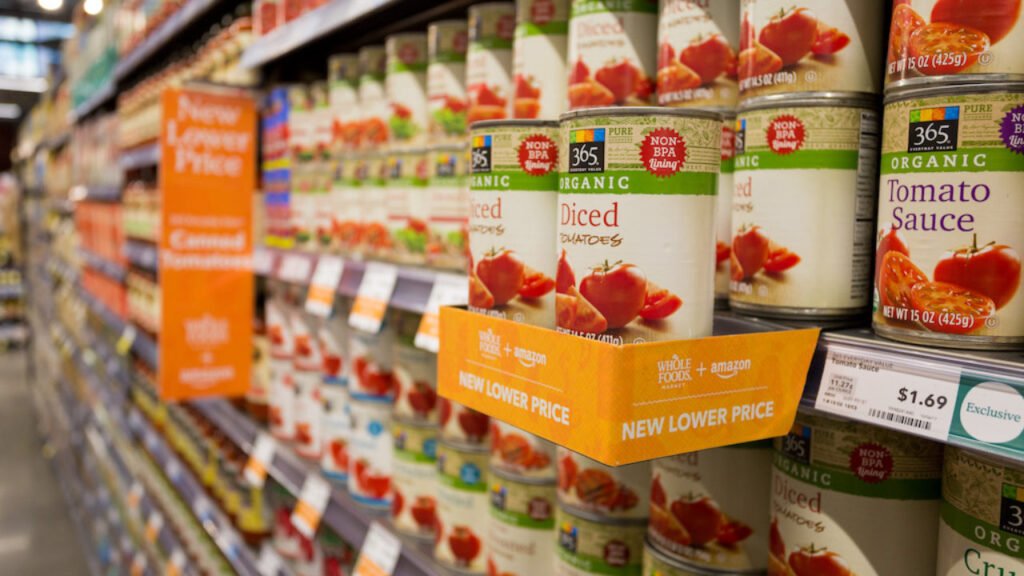
Ground Peeled Tomatoes
This ketchup refers to tomatoes that are peeled, seeded, and broken. Compared with the above three, this should be the ketchup with less processing. It is usually homemade tomato sauce made directly from fresh tomatoes.

Marinara Sauce
The word(Marinara) comes from the Italian “marinaro”, an American -Italian term used to refer to flavored tomato sauce. Each Italian family has a different version, adding spices, meat, seafood, mushrooms, and sweet pepper, add whatever you want. The word-Marinara translated as Italian cooking sauce made with tomatoes, garlic, onions, etc.
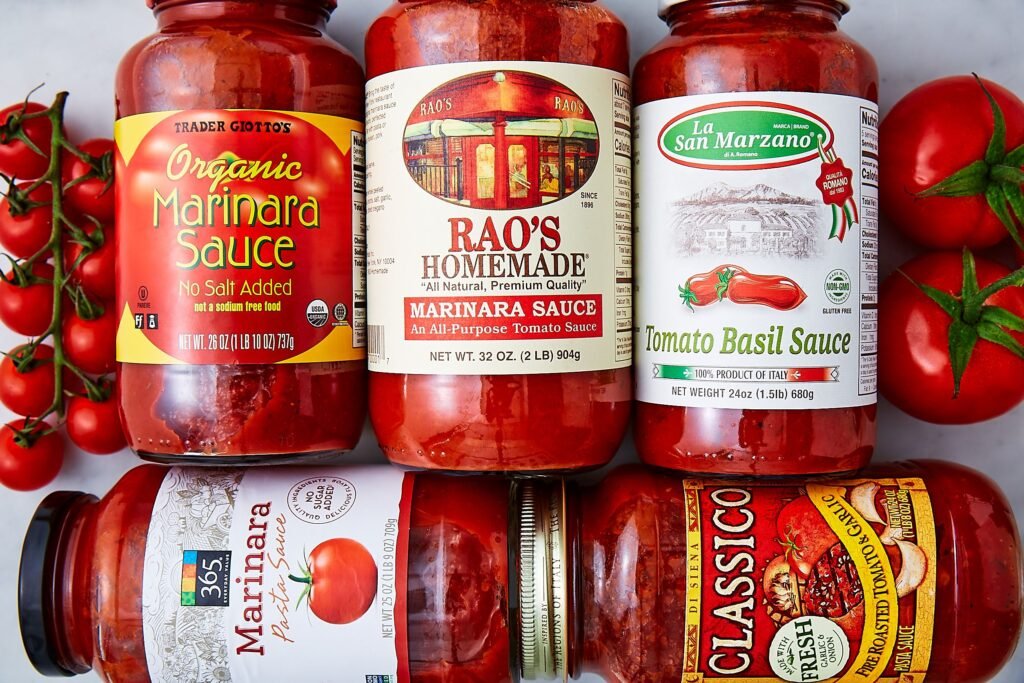
There are mainly two kinds of ketchup: ketchup is eaten directly as dipping sauce and ketchup that needs to be cooked to enhance the color and freshness of food.
What is the process of a ketchup production line?
Raw material selection – bubble washing – sorting – drying – crushing and seed removal – precooking – beating/pulping and refining – concentrating/thickening – sterilizing – filling and sealing – sterilizing
Raw material selection
Choose fully mature, fresh, bright-colored tomatoes with thin skin, thick meat, and few seeds as raw materials. The freshness of tomato is the main factor affecting the flavor of ketchup. The fresher and more complete the chosen tomato, the better the quality of the finished product.
For tomatoes that have been picked and stored for too long, due to the loss of water evaporation, the freshness and the acidity will reduce, the sugar content will increase, and the vitamin loss is more. On the other hand, when tomatoes are stacked, the product temperature rises, they are easy to rot and deteriorate.
Therefore, the processing plant of ketchup had better be not far from the tomato planting base.
Bubble washing
The bubble washing machine can effectively remove the sediment, impurities and residual pesticides adhered to the tomato.
Linho company uses the bubble-type high-pressure spray washing machine to wash tomatoes. The washing principle is to use the blower to send the air into the washing tank, the blowing of the air, the water for cleaning the tomatoes will turn violently, to wash the dirt on the surface of the tomatoes.
Stirring with air accelerates the washing off of the dirt on the surface of tomatoes, preventing the tomatoes from being damaged under violent turning.

The upper part of the net belt of the machine is equipped with the spray pipe and spray head, which can spray circularly through the high-pressure water pump, effectively suppressing the upward floating of tomatoes, to facilitate the washing of tomatoes.
The spray nozzle is a detachable nozzle, easy to clean without blocking. The nozzle angle is adjustable, easy to clean tomatoes in all directions without a dead-angle.
Sorting
Manually pick out unqualified tomatoes on the selection platform, such as those with insect-eyes, rotten and immature tomatoes, and remove the green stalks of the tomato.
Drying
Linho air dryer adopts a turnover air dryer, easy to dry the surface moisture of tomatoes more effectively.
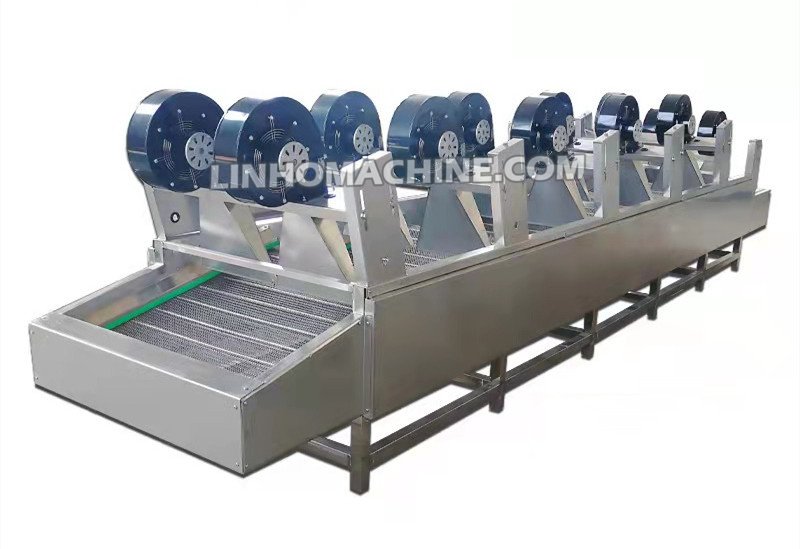
Crushing and seed removal
To make the tomato in the precooking process heat fast and uniform, convenient beating, we need to crush the whole tomato into lumps.
Linho company adopts the double-leaf crusher, equipped with a seed-removal device, seeds will not enter the beater, affecting the flavor, texture, and taste of the sauce.
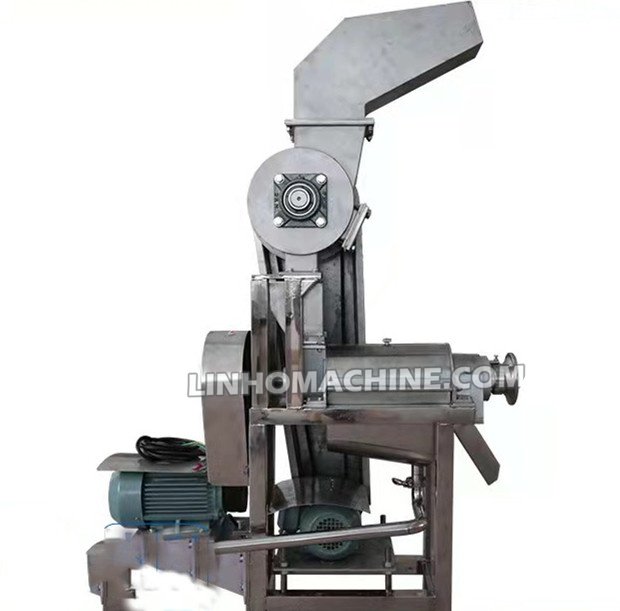
Precooking
We need to heat the crushed tomatoes to 85-90℃, to inhibit the activities of pectinesterase, avoiding reducing the viscosity and coating of the ketchup.
Beating/pulping and refining
After precooking, pour the tomato into the beater/pulping, beat the tomato chunks into tomato puree, remove the peel and remaining seeds.
Linho tomato beater adopts the 3-times beater to ensure the separation of pulp skin dregs, and seeds, to ensure the tomato sauce is exquisite.
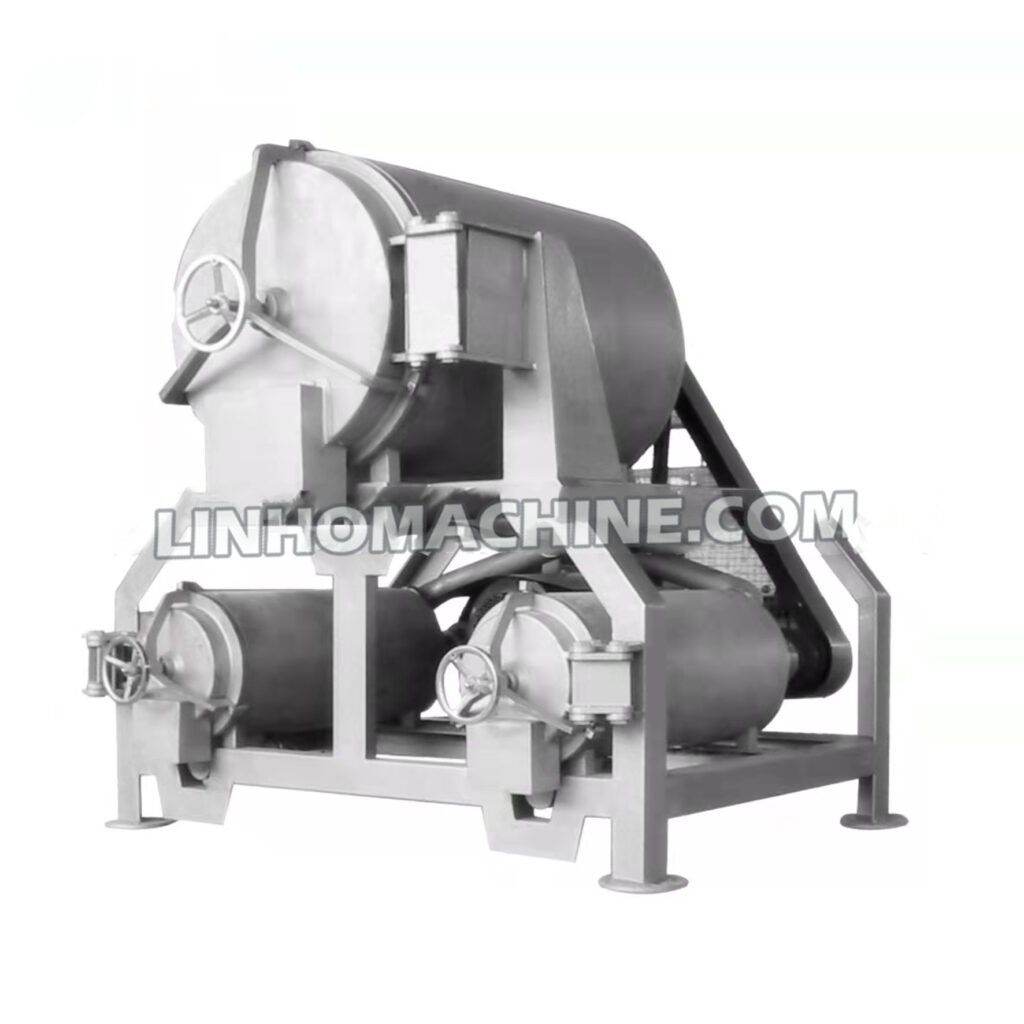
Concentrating/thickening
After beating, the tomato pulp contains a lot of water, needs the concentration equipment to remove the excess water and achieve the appropriate viscosity.
After beating, we need to concentrate the tomato pulp to avoid stratification(the pectinase).
The concentration equipment has normal pressure jacketed pot concentration and vacuum concentration equipment.
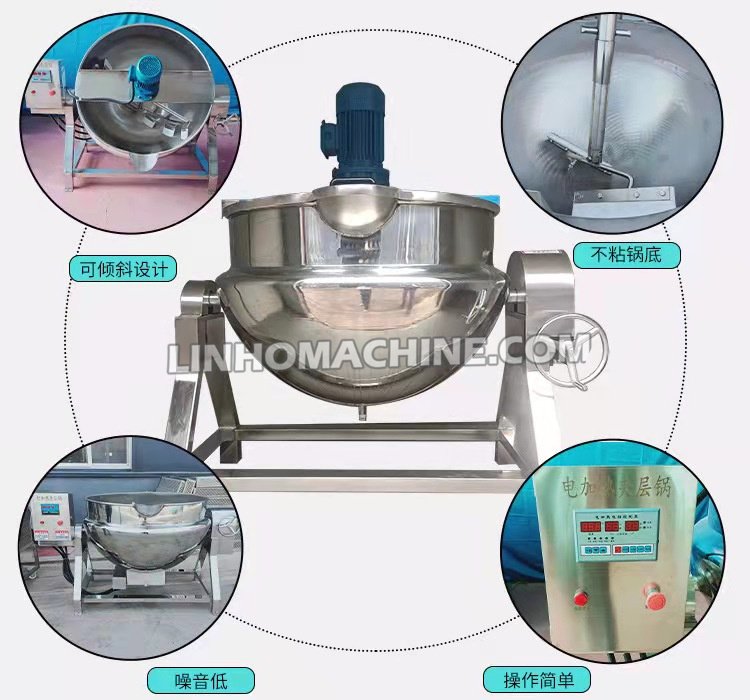

Sterilizing
The concentrated ketchup needs high-temperature sterilization to inhibit bacterial growth and extend the shelf life of ketchup.
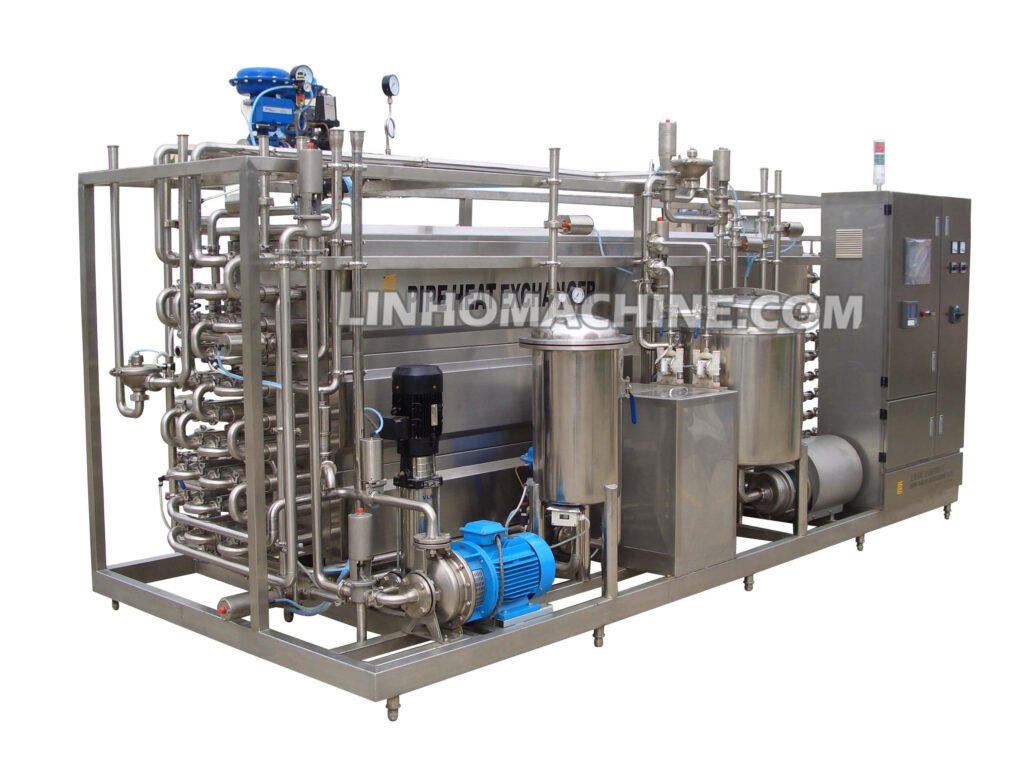
Filling and sealing
We can fill the sterilized ketchup into sterile barrels and bags, it can have a shelf life of 1-2 years. You can sell it to ketchup filling factories or tomato-based food factories (such as tomato flavor potato chips and biscuit factories). If you are interested, you can take some of them and add the appropriate formula according to local taste to make ketchup products in bags and bottles commonly found in supermarkets.

There are many containers for ketchup, including portable small bag ketchup, bottled ketchup (plastic bottle and glass bottle), and canned ketchup. No matter what container we use to fill ketchup, we must ensure no bacteria in the container.
In the ketchup production line, to avoid the air entering, it is usually filled immediately after high-temperature sterilization (the temperature would be better above 85 degrees), and then vacuum sealed immediately.
Portable small package (bag and cup)ketchup filling machine
The small packing ketchup mainly exists in restaurants, such as KFC.
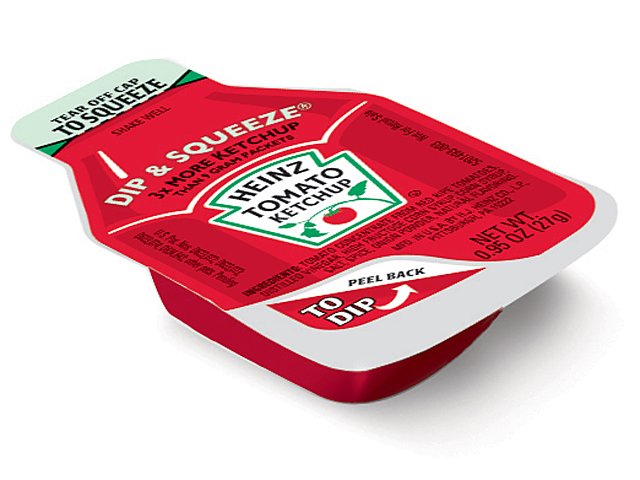

Glass bottled ketchup filling machine
The glass-bottled ketchup filling machine of LINHO is equipped with a heating stirring tank to ensure the filling temperature.
Servo filling ensures the accuracy of filling.
The capping machine of Linho company is vacuum-capping, guaranteeing that after long-distance transportation the ketchup flavor in the bottle does not change. The vacuum capping, when you open the cap, you will hear a ‘bang’.
Canned ketchup filling machine
The canned ketchup filling machine of Linho adopts filling and sealing 2 in 1 compact structure, sealing immediately after filling, avoiding the entry of air during filling.
Plastic bottled ketchup filling machine
Plastic bottled ketchup is more and more popular, convenient transportation, especially the extrusion device, easy to control quantity.
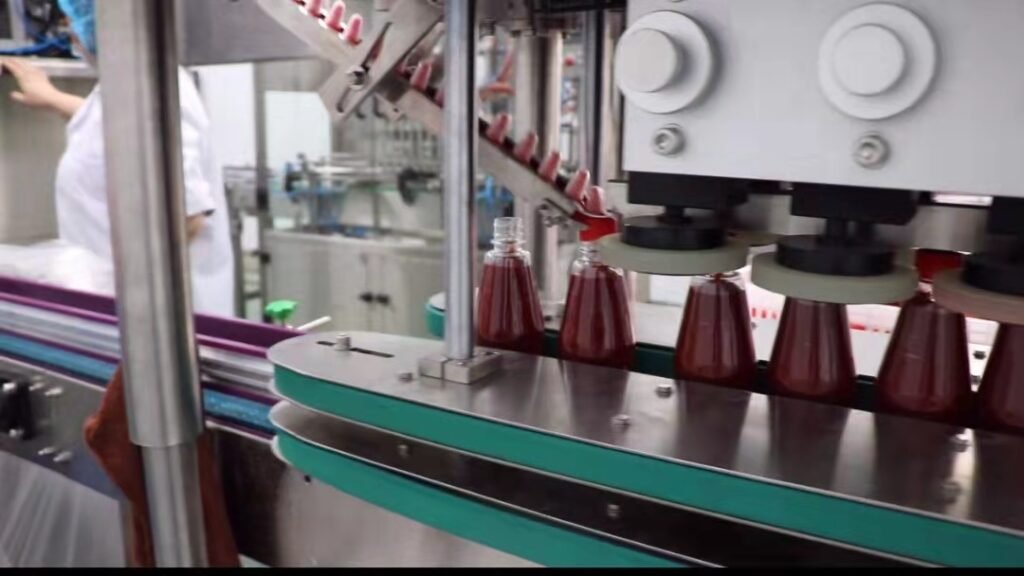

Stand up pouch(spout pouch) ketchup filling machine
Same as the plastic bottled ketchup, spout pouch ketchup is popular as it has an extrusion device.

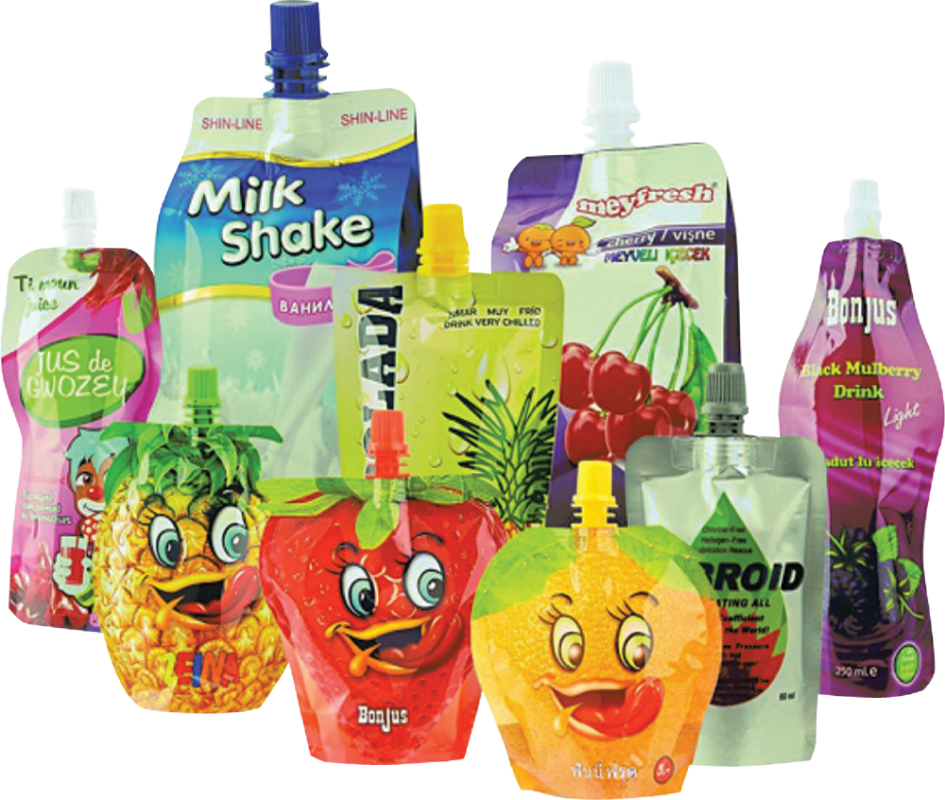
Sterilizing and cooling
The sterilization(cooling)temperature and time of ketchup are usually depended on the packaging container.
After sterilization, cans and bags of ketchup can be cooled with water, glass-bottled ketchup shall be gradually cooled and cooled in sections to prevent container breaking.

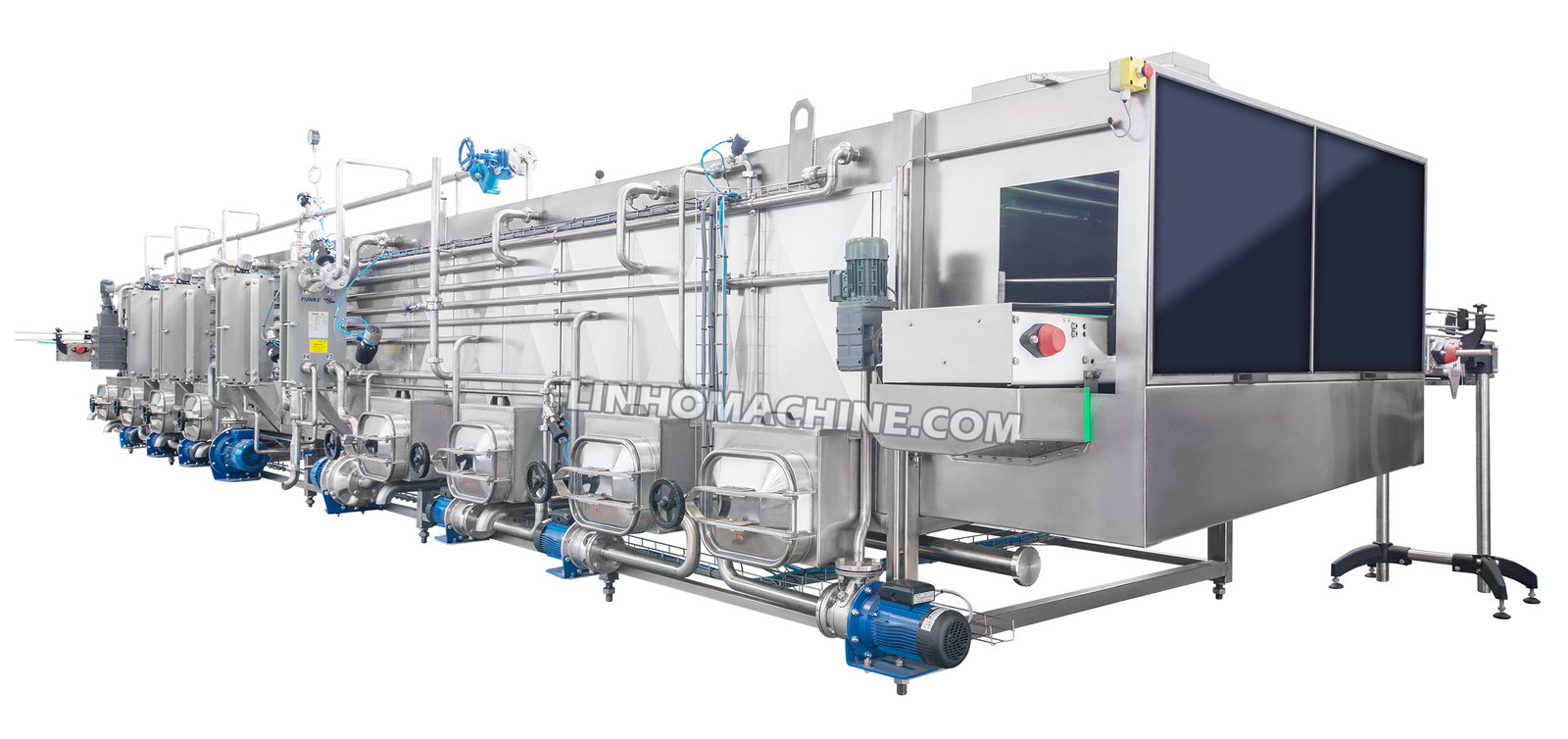
Now you have a general understanding of the ketchup production line. If you have any questions, please leave a message and contact us. Linho can provide a complete set of ketchup production line solutions according to your requirements, including processing fresh tomatoes into ketchup, ketchup sterilization, filling, and packing.


